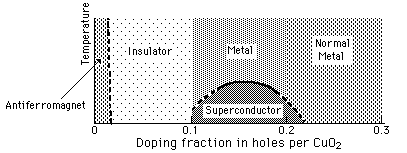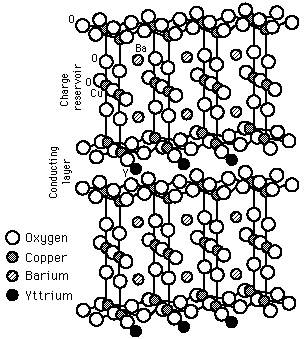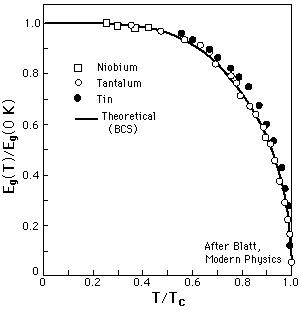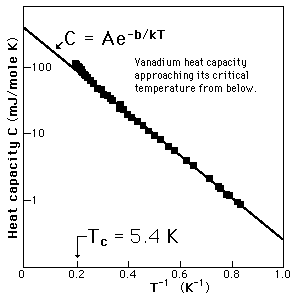High Temperature Superconductors
Ceramic materials are expected to be insulators -- certainly not superconductors, but that is just what Georg Bednorz and Alex Muller found when they studied the conductivity of a lanthanum-barium-copper oxide ceramic in 1986. Its critical temperature of 30 K was the highest which had been measured to date, but their discovery started a surge of activity which discovered superconducting behavior as high as 125 K.
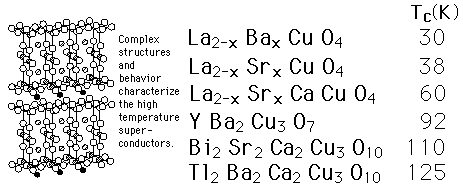
| Show phase diagram |
Superconductivity concepts
Reference Rohlf,Ch 15
See also June 91 issue of Physics Today ( 7 articles).
| HyperPhysics***** Condensed Matter | R Nave |
